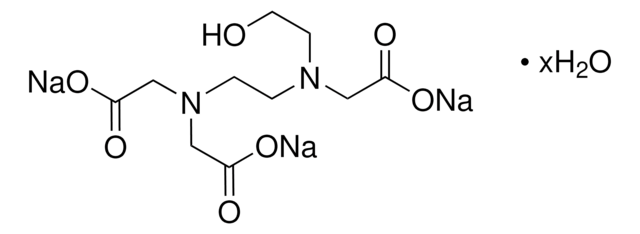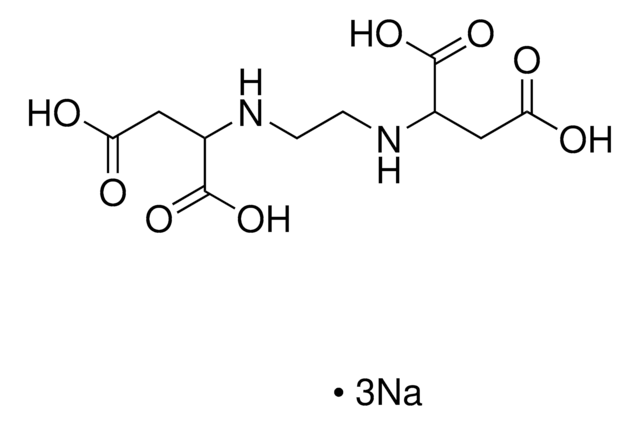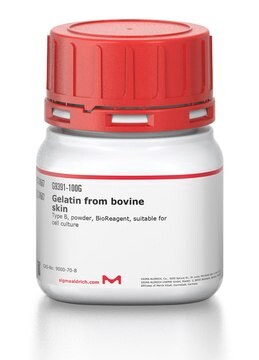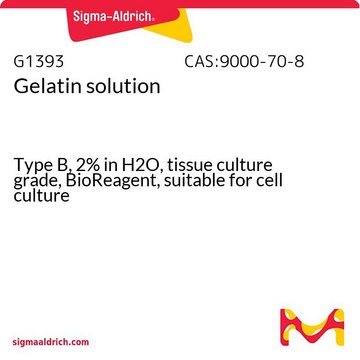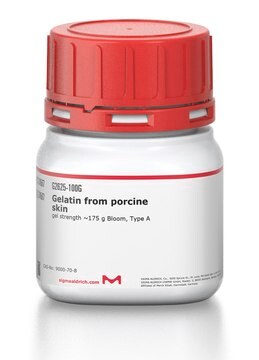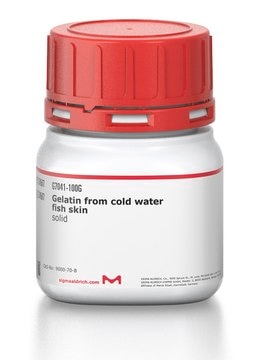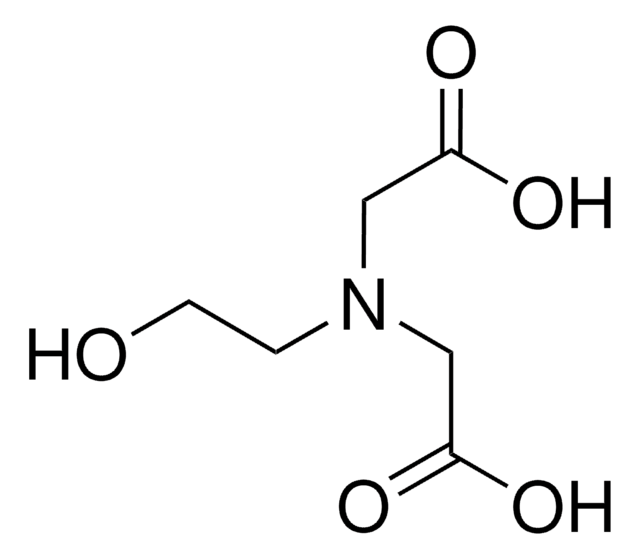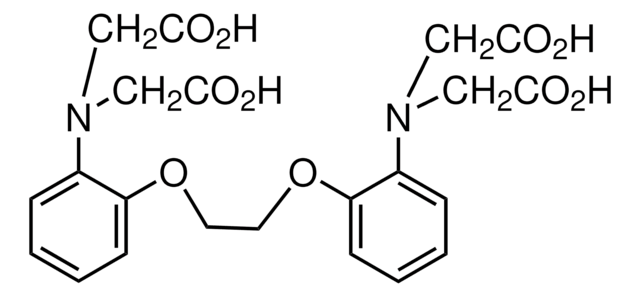Kluczowe dokumenty
H8126
N-(2-Hydroxyethyl)ethylenediamine-N,N′,N′-triacetic acid
~98%
Synonim(y):
N-Carboxymethyl-N′-(2-hydroxyethyl)-N,N′-ethylenediglycine, HEDTA, HEEDTA
About This Item
Polecane produkty
Próba
~98%
Poziom jakości
Postać
powder
mp
212 °C (dec.) (lit.)
ciąg SMILES
OCCN(CCN(CC(O)=O)CC(O)=O)CC(O)=O
InChI
1S/C10H18N2O7/c13-4-3-11(5-8(14)15)1-2-12(6-9(16)17)7-10(18)19/h13H,1-7H2,(H,14,15)(H,16,17)(H,18,19)
Klucz InChI
URDCARMUOSMFFI-UHFFFAOYSA-N
Szukasz podobnych produktów? Odwiedź Przewodnik dotyczący porównywania produktów
Zastosowanie
Hasło ostrzegawcze
Danger
Zwroty wskazujące rodzaj zagrożenia
Zwroty wskazujące środki ostrożności
Klasyfikacja zagrożeń
Acute Tox. 4 Oral - Eye Dam. 1 - Skin Irrit. 2
Kod klasy składowania
11 - Combustible Solids
Klasa zagrożenia wodnego (WGK)
WGK 2
Temperatura zapłonu (°F)
Not applicable
Temperatura zapłonu (°C)
Not applicable
Środki ochrony indywidualnej
dust mask type N95 (US), Eyeshields, Gloves
Wybierz jedną z najnowszych wersji:
Masz już ten produkt?
Dokumenty związane z niedawno zakupionymi produktami zostały zamieszczone w Bibliotece dokumentów.
Klienci oglądali również te produkty
Nasz zespół naukowców ma doświadczenie we wszystkich obszarach badań, w tym w naukach przyrodniczych, materiałoznawstwie, syntezie chemicznej, chromatografii, analityce i wielu innych dziedzinach.
Skontaktuj się z zespołem ds. pomocy technicznej

